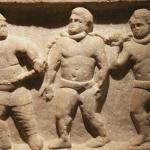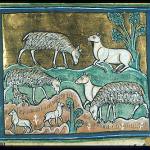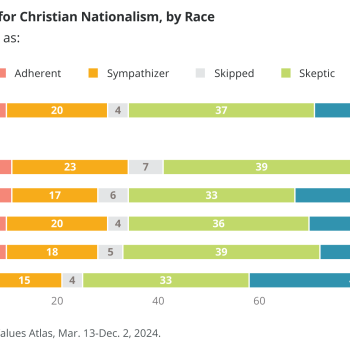Last month, Eerdman’s Press published People Get Ready: Twelve Jesus-Haunted Misfits, Malcontents, and Dreamers in Pursuit of Justice, a collection of theological biographies of prominent figures in American life. Some are household names–Flannery O’Connor, Pete Seeger, Toni Morrison, while others–Sarah Patton Boyle, Ramon Dagoberto Quinones, Bruce Klunder–are widely unknown. But each figure offers a reflection of the relationship between faith and society, between the eternal and the personal, a messy concoction of people who insist on being of some use, borrowing from Bonhoeffer.

(*Full disclosure, I contributed the first chapter, but I think the other scholars’ contributions are of such value that I hope you’ll forgive me for publicizing!)
In the forward, Charles Marsh, Commonwealth Professor of Religious Studies at the University of Virginia and founder of the Center for Lived Theology, writes that the book “directs our attention to twelve people…who followed the example of Jesus into spaces marked by oppression and the tyranny of death, and there made manifest God’s love for all that God made.” It should be no surprise that in following this way of Jesus, these people were odd, out of step with the times, sometimes prophetic, sometimes radical, but mostly out of place. They were weird workers for and witnesses of the new kingdom.
It’s a motley crew of saints to be sure.
Carolyn Renee Dupont, Professor of History at Eastern Kentucky, explores the life of Bruce Klunder someone, she asserts,“America has largely forgotten.” And on purpose. Klunder’s story doesn’t fit the traditional account of civil rights martyr. He was white, he was in Ohio, his death, while protesting construction of a segregated school in Cleveland was an accident. But in recovering Klunder’s story, Dupont presents a more challenging narrative, one in which ordinary white churchgoers in the North “revealed a commitment to the racial hierarchy as profound as any Klan member” and nothing really changed. Klunder’s life and death “followed an arc more common and sobering, one devoid of satisfying resolutions.” Perhaps one more true.
Jemar Tisby, New York Times bestselling author and historian now at Simmons College, contributed a deeply personal essay on the tensions apparent between Blackness and evangelicalism in the life of Tom Skinner. The chapter begins with Skinner boldly calling to name the history of racism and proclaim liberty for the captives in Urbana in 1967 ; it ends with racial reconciliation in Mission Mississippi. As Tisby wryly notes, “Black Christians who remain in white evangelical spaces have three options…get pushed out, burn out, or sell out.” In interrogating Skinner’s life and ministry, Tisby confronts the meager possibilities of Black Christians within American evangelicalism, but still insists on abundance in the gospel of Jesus.
My dad, an attorney turned pecan farmer, will not stop talking about Mallory McDuff’s chapter on Rachel Carson. McDuff, a professor of environmental education at Warren Wilson College begins her work on the famed mother of the environmental movement with a powerful line: “This is a story about women who worry.” And we have a lot to worry about. But McDuff and Carson also offer an example of how to move beyond worry, to move to action “driven by wonder in the world, especially the sea, and faith in the connection of all living things.” The chapter is a testament to “dogged” hope, to being attentive to beauty, to doing as much as we can for as long as we have.
Mark Gornik has contributed a tribute to his friend Allan Tibbels, a white suburbanite called to live and work in the area of Baltimore known as Sandtown. In some ways, that has become a familiar tale, one that can be troublingly laced with paternalism and false benevolence. But this isn’t that. After a horrible accident playing basketball as a young adult, Tibbels was quadriplegic. Confined to a wheelchair, he grappled deeply with God’s character and his own calling. “The idea of being effective there in the chair is overwhelming almost to the point of despair,” Tibbels wrote in his journal, but was assured that “God is on the side of the poor and the oppressed,” the only question remaining “where should I locate to be involved?” Tibbels lived the rest of his too short life in Sandtown, embodying “the impact of trauma and unspeakable losses” in his body as the neighborhood did, and testifying to the possibilities of restoration in this world and the next.
Jane Hong, an associate Professor at Occidental College, tells the remarkable story of Mary Paik Lee, “one of the earliest Korean immigrants in America and arguably one of the first “Korean Americans.”” Lee fled Korea with her parents at age five, spending her remaining ninety-five years in the United States–where she confronted anti-Asian discrimination and also asked questions about what it meant to “share the same religious faith as your oppressors.” Still, that faith sustained Lee even as she cultivated a diasporic imagination in more ways than one.
And that’s just the first half. I’ll cover the rest of the contributions next month. In the meantime, get the book and let me know what you think!
You can also hear Tisby, Tuttle, Slade and Bussie discuss the project here.













